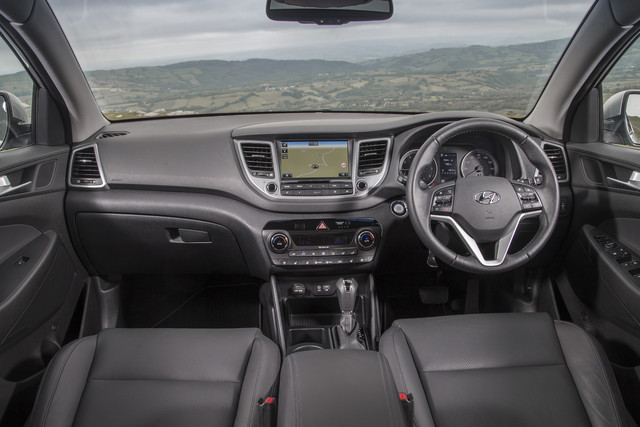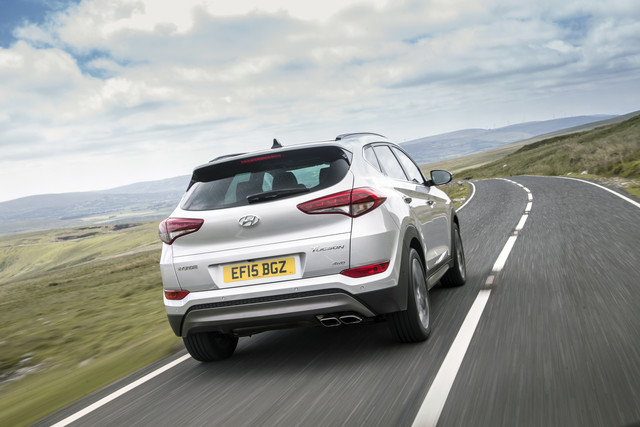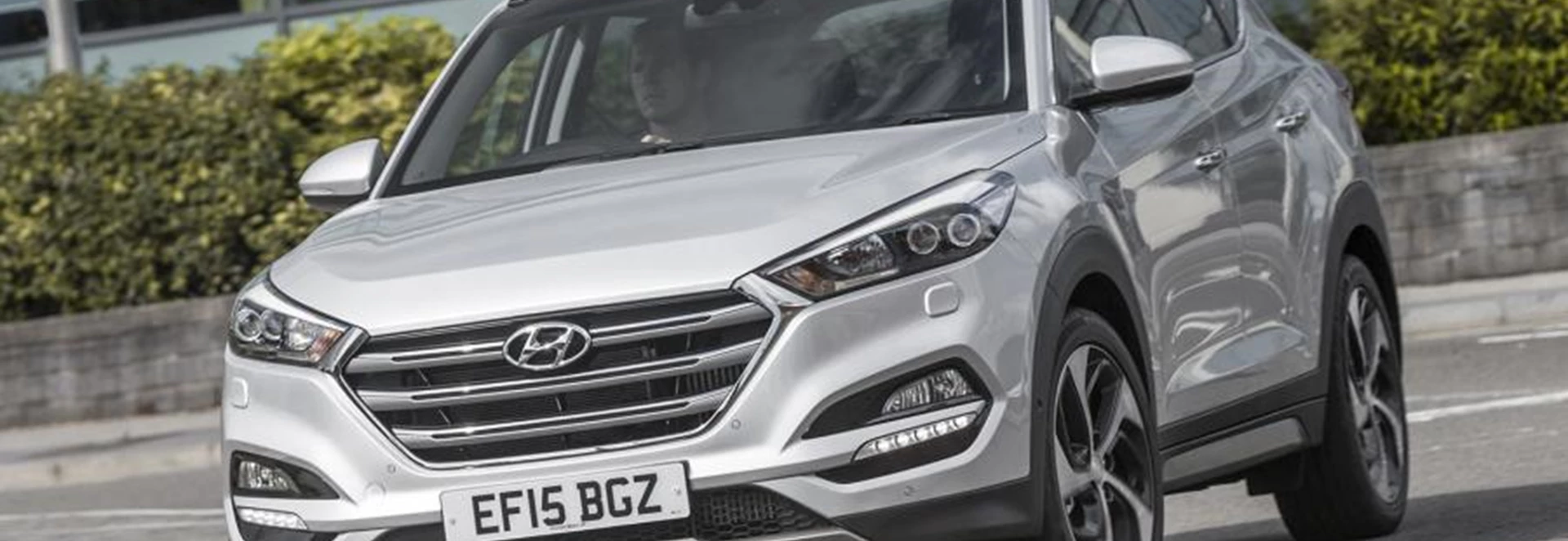Tucson? I’m sure I’ve heard that name before. If this was your reaction then you’re not wrong. Hyundai launched the Tucson name back in 2004, but in 2009 the Tucson name was temporarily dropped in place of a new model – the ix35. But now, those roles are being reversed.
So what is the Tucson? Well, think of it as a more grown-up, more evolved version of the ix35, set to compete against the likes of the Nissan Qashqai. And think of the ix35 as a sort of beta version of the new Tucson.
On the style front, the Tucson incorporates the brand’s more angular, longer-looking front end. Imagine the front end of a new i20, with a few more teeth (grille bars in this case), after a visit to the gym. The Tucson is also slightly chunkier than the outgoing ix35 all-round, although it sits a little lower than it. Some would call that a ‘sportier stance’.
It’s not just the outside that has noticeable improvements over the ix35 though. The Tucson’s interior feels much smarter, with its dashboard layout feeling more like a saloon than a crossover. The seats are also incredibly comfortable. The SE Nav model we tested is the sweet spot in the range, offering Bluetooth, air-con, parking sensors, a reversing camera and sat-nav, all housed in a new eight-inch touchscreen which is easy to use and very responsive.

Boasting a bigger boot than the Qashqai at 513 litres, the Tucson is very practical. As it breaks the 500 litre threshold it is also nearly 50 litres bigger than the ix35. An interesting feature at the rear is the inclusion of plastic panels in place of metal on the boot lid in popular ‘dinging’ areas, which Hyundai has put in place to reduce repair costs if anyone rear-ends you.
There’s plenty to ponder on the engine front, with three diesels and two petrols – although the latter is unlikely to get much attention. We drove the expected bestselling 114bhp 1.7-litre diesel unit. It’s easy to see why this engine is expected to be the Tucson’s bread and butter. With enough oomph to whizz around tractors on B roads, but also impressive economy figures (119g/km of CO2/claimed average of 62mpg), the 1.7-litre is a great ‘day-to-day’ engine. There are a few other slightly punchier diesels to tempt you, but even the hottest 183bhp option only feels marginally more powerful – plus it will eat into your wallet considerably more when it comes to running costs. The 1.7-litre is quite noisy low down the gears though, but it shouldn’t be enough to put you off.
Both manual and auto ‘boxes are available across the range. The manual is slick enough and although it has quite a long throw, this doesn’t take away from the smooth driving experience. The auto feels well attuned and capable of keeping up with driving-style mood swings.
Thankfully on the composure front, the Tucson doesn’t roll anywhere near as much as the ix35 does in the corners – which was a bit of a nuisance in the outbound model. Comfort isn’t lost however. The Tucson manages to toe the fine line between suppleness and firmness. This means you can chuck it into a bend (within reason) with confidence, but also happily cruise at 70mph.
The steering is arguably the biggest step forward for Hyundai on the engineering front. The ix35 didn’t offer much in the way of feedback, leaving you feeling pretty disconnected from the driving experience. The Tucson is very different. Added weight and responsiveness means the Tucson is actually rather entertaining to drive, certainly more engaging and a better overall experience than the Qashqai. It’s still a fair bit off the likes of the CX-5 for fun factor, but it’s on the right lines.

Those who feel they may need to tackle muddy tracks needn’t worry as there is a 4x4 model available. From what we tested it on (which included some hilly gravel/muddy trails) the Tucson feels quite capable and should be able to handle anything you are realistically going to throw at it.
Starting at £18,695, the Tucson is just a smidgeon more expensive than the Nissan Qashqai, which starts at £18,545. But Hyundai claims that the Tucson will carry best-in-class residuals, and of course, let’s not forget about its renowned five-year warranty.
Bringing a name back – even if it’s only after six years – can be tough. Thankfully, Hyundai has been able to deliver with something that undoubtedly feels much more mature in both its appearance, build and the way it drives. Whereas the ix35 was merely an affordable addition to the crossover segment, the new Tucson feels like it could compete on a much higher level.




